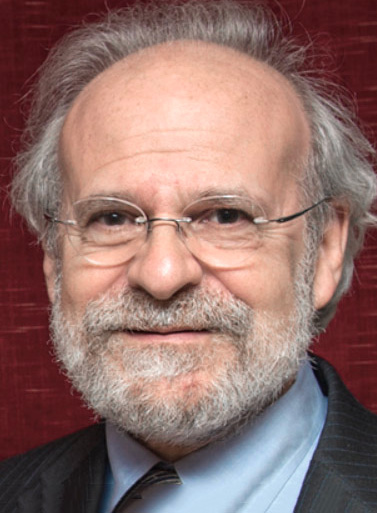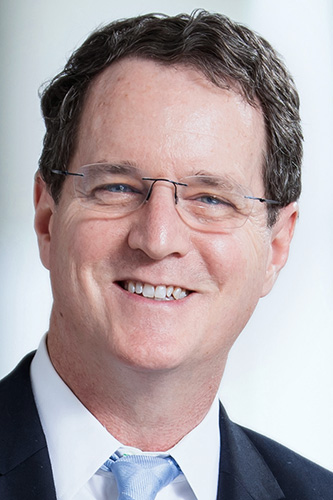

 When I was first advocating home networking at Microsoft, we encountered a problem. The existing systems and applications had implicitly assumed they were inside a safe environment and didn't consider threats from bad actors. Early Windows systems hadn't yet provided file system with access control and other protections though there were some attempts to have separate logins to keep some settings separate.
When I was first advocating home networking at Microsoft, we encountered a problem. The existing systems and applications had implicitly assumed they were inside a safe environment and didn't consider threats from bad actors. Early Windows systems hadn't yet provided file system with access control and other protections though there were some attempts to have separate logins to keep some settings separate.
 Do you know someone who deserves recognition for helping build the Internet in their region or country? Or someone who made the Internet more secure through the work they've done? Or someone who made some major technical innovation that made the Internet faster or better?
Do you know someone who deserves recognition for helping build the Internet in their region or country? Or someone who made the Internet more secure through the work they've done? Or someone who made some major technical innovation that made the Internet faster or better?
 In 1987, CompuServe introduced GIF images, Steve Wozniak left Apple and IBM introduced the PS/2 personal computer with improved graphics and a 3.5-inch diskette drive. Behind the scenes, one more critical piece of internet infrastructure was quietly taking form to help establish the internet we know today. November of 1987 saw the establishment of the Domain Name System protocol suite as internet standards.
In 1987, CompuServe introduced GIF images, Steve Wozniak left Apple and IBM introduced the PS/2 personal computer with improved graphics and a 3.5-inch diskette drive. Behind the scenes, one more critical piece of internet infrastructure was quietly taking form to help establish the internet we know today. November of 1987 saw the establishment of the Domain Name System protocol suite as internet standards.
 The debate around encryption has become a hot topic in a world where communications are increasingly becoming digital. The modern encryption debate is a complex and nuanced issue, with many players from different backgrounds trying to influence the conversation. The question of balancing the need for national security with the right to privacy has been a matter of public debate for years. Only recently has the issue been framed in terms of encryption, but the discussion is certainly not new.
The debate around encryption has become a hot topic in a world where communications are increasingly becoming digital. The modern encryption debate is a complex and nuanced issue, with many players from different backgrounds trying to influence the conversation. The question of balancing the need for national security with the right to privacy has been a matter of public debate for years. Only recently has the issue been framed in terms of encryption, but the discussion is certainly not new.
Last Saturday marked the 53rd anniversary of the Internet. While the vast majority of its five billion users have been online for less than a decade, the Internet was taken into use on October 29th, 1969, when two computers connected to the ARPANET exchanged a message. Although the Internet has been around for a while, it remained below most people's radar until the late 1990s when the dot com boom started.
 CIDR (Classless Inter-Domain Routing) is a routing system in which network engineers can distribute IP addresses based on the size of their specific network. This is more efficient than the previous system, which assigned IP addresses depending on whether the size of a network fits into one of only three sizes: Class A, Class B, and Class C.
CIDR (Classless Inter-Domain Routing) is a routing system in which network engineers can distribute IP addresses based on the size of their specific network. This is more efficient than the previous system, which assigned IP addresses depending on whether the size of a network fits into one of only three sizes: Class A, Class B, and Class C.
 Two recent celebrated cybersecurity standards history events brought together sets of people who were intimately involved with some of the most significant network security standards work ever undertaken. These included the X.509 digital certificate standards at ITU X.509 Day, and the Secure Digital Network System (SDNS) standards at the NSA Cryptologic History Symposium 2022.
Two recent celebrated cybersecurity standards history events brought together sets of people who were intimately involved with some of the most significant network security standards work ever undertaken. These included the X.509 digital certificate standards at ITU X.509 Day, and the Secure Digital Network System (SDNS) standards at the NSA Cryptologic History Symposium 2022.
 Do you know someone who has made outstanding contributions in service to the Internet community? Someone who has made the Internet better in some way who deserves more recognition? Maybe someone who has helped extend Internet access to a large region? Or wrote widely-used programs that make the Internet more secure? Or served in some capacity behind the scenes in Internet services?
Do you know someone who has made outstanding contributions in service to the Internet community? Someone who has made the Internet better in some way who deserves more recognition? Maybe someone who has helped extend Internet access to a large region? Or wrote widely-used programs that make the Internet more secure? Or served in some capacity behind the scenes in Internet services?
 I work at APNIC, the Regional Internet Registry that serves the Asia Pacific Region. APNIC provides common infrastructure services for the region that support the unique assignment of IP address blocks to Internet network operators within our region through the operation of an address registry. In short, IP addresses are what we do. So, when there are discussions in technology circles about evolving the Internet's address model in varying ways,...
I work at APNIC, the Regional Internet Registry that serves the Asia Pacific Region. APNIC provides common infrastructure services for the region that support the unique assignment of IP address blocks to Internet network operators within our region through the operation of an address registry. In short, IP addresses are what we do. So, when there are discussions in technology circles about evolving the Internet's address model in varying ways,...
 When did the Internet begin? It all gets a bit hazy after so many years, but by the early 1970s, research work in packet-switched networks was well underway, and while it wasn't running TCP at the time (the flag day when the ARPANET switched over to use TCP was not until 1 January 1983) but there was the base datagram internet protocol running in the early research ARPA network in the US. Given that this is now around 50 years ago, and given that so much has happened in the last 50 years, what does the next 50 years have in store?
When did the Internet begin? It all gets a bit hazy after so many years, but by the early 1970s, research work in packet-switched networks was well underway, and while it wasn't running TCP at the time (the flag day when the ARPANET switched over to use TCP was not until 1 January 1983) but there was the base datagram internet protocol running in the early research ARPA network in the US. Given that this is now around 50 years ago, and given that so much has happened in the last 50 years, what does the next 50 years have in store?